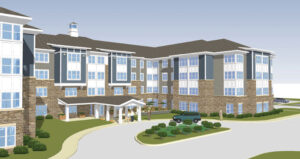
Commercial real estate (CRE) has always been subject to interest rate fluctuations, and with the Federal Reserve continuing interest rate hikes, many investors are concerned about the impact on the CRE market, particularly in the senior housing sector. However, it’s important to understand that rising interest rates do not necessarily mean the end of the road for senior housing investors. In fact, with careful planning and a focus on key trends, it’s possible to navigate the higher interest rate environment and still achieve strong returns on investment.
Here are some important considerations for investors looking to navigate the commercial real estate trends in the senior housing sector during a higher interest rate environment.
Strong market demand
The senior housing market continues to experience strong demand due to the aging population and increasing need for senior care. This demand has continued despite fluctuations in interest rates and other economic factors. In a higher interest rate environment, it’s important to focus on senior housing properties located in markets with strong demographic fundamentals and a growing population of seniors.
Strong value proposition
Senior housing offers a strong value proposition, particularly in terms of stable and consistent cash flows. Many seniors require long-term care, which means that senior housing properties can provide a steady stream of income for investors. Additionally, senior housing properties often have long-term lease agreements in place, providing stability and consistency even in a higher interest rate environment.
Alternative financing options
While interest rates may be rising, it’s important to remember that there are still alternative financing options available for senior housing investments. For example, crowdfunding platforms and private lending institutions may offer competitive rates and terms, even in a higher interest rate environment. Additionally, some investors may choose to use a combination of debt and equity financing to help mitigate the impact of rising interest rates.
Focus on value-add opportunities
Value-add properties can be a smart investment strategy during a higher interest rate environment. By acquiring and improving under performing senior housing properties, investors can increase the property’s value and generate stronger returns. Look for properties with opportunities to add value through renovations, repositioning, or better management.
Be mindful of potential inflation
Higher interest rates often go hand-in-hand with inflation, which can impact the senior housing market in a number of ways. For example, rising inflation may lead to increased construction costs, making new development projects more expensive. Additionally, inflation may drive up the cost of living, making it more difficult for seniors to afford the cost of care. Be mindful of potential inflation when evaluating senior housing investment opportunities and consider how rising inflation could impact your investment returns.
Monitor market trends
Finally, it’s important to stay informed about senior housing market trends and conditions. Keep an eye on local economic indicators, such as employment rates and job growth, as well as broader economic indicators, such as inflation and interest rates. By staying informed and up-to-date on market trends, you’ll be better equipped to make informed senior housing investment decisions in a higher interest rate environment.
In conclusion, while rising interest rates may cause concern for senior housing investors, it’s important to remember that there are still opportunities for strong returns in a higher interest rate environment. By focusing on strong market demand, a strong value proposition, alternative financing options, value-add opportunities, potential inflation, and market trends, senior housing investors can navigate the changing landscape of the commercial real estate market and achieve their investment goals.





